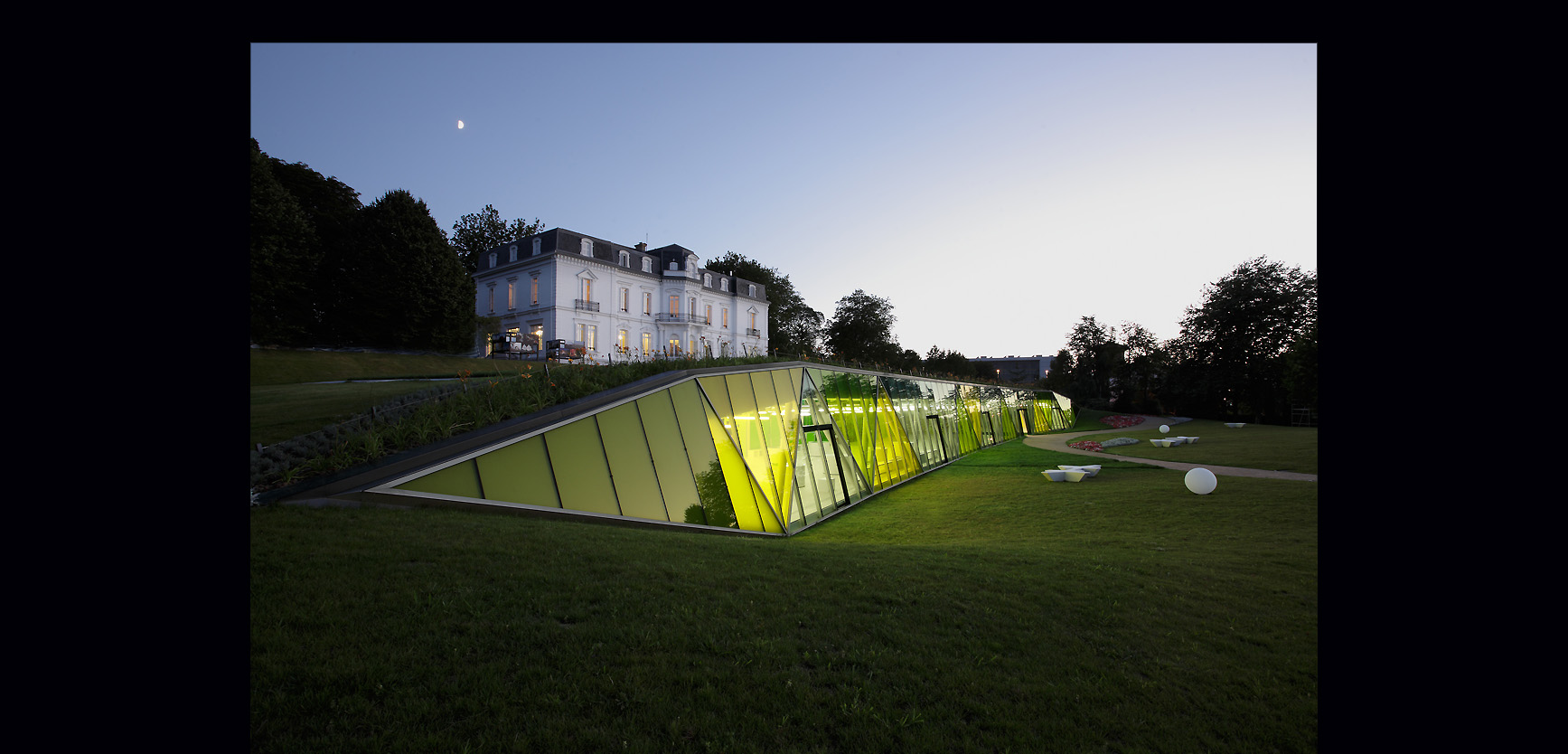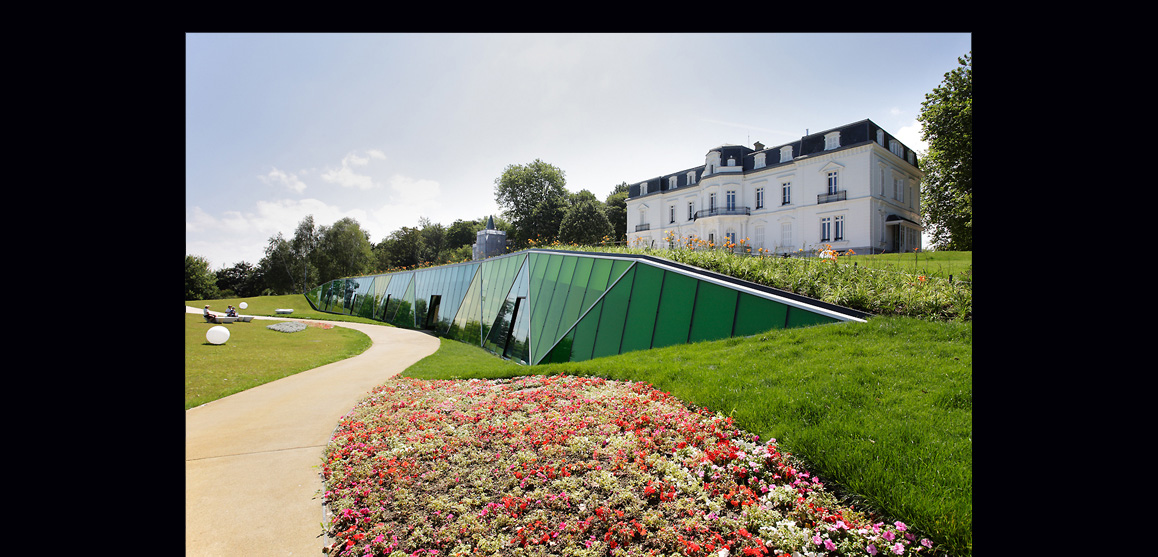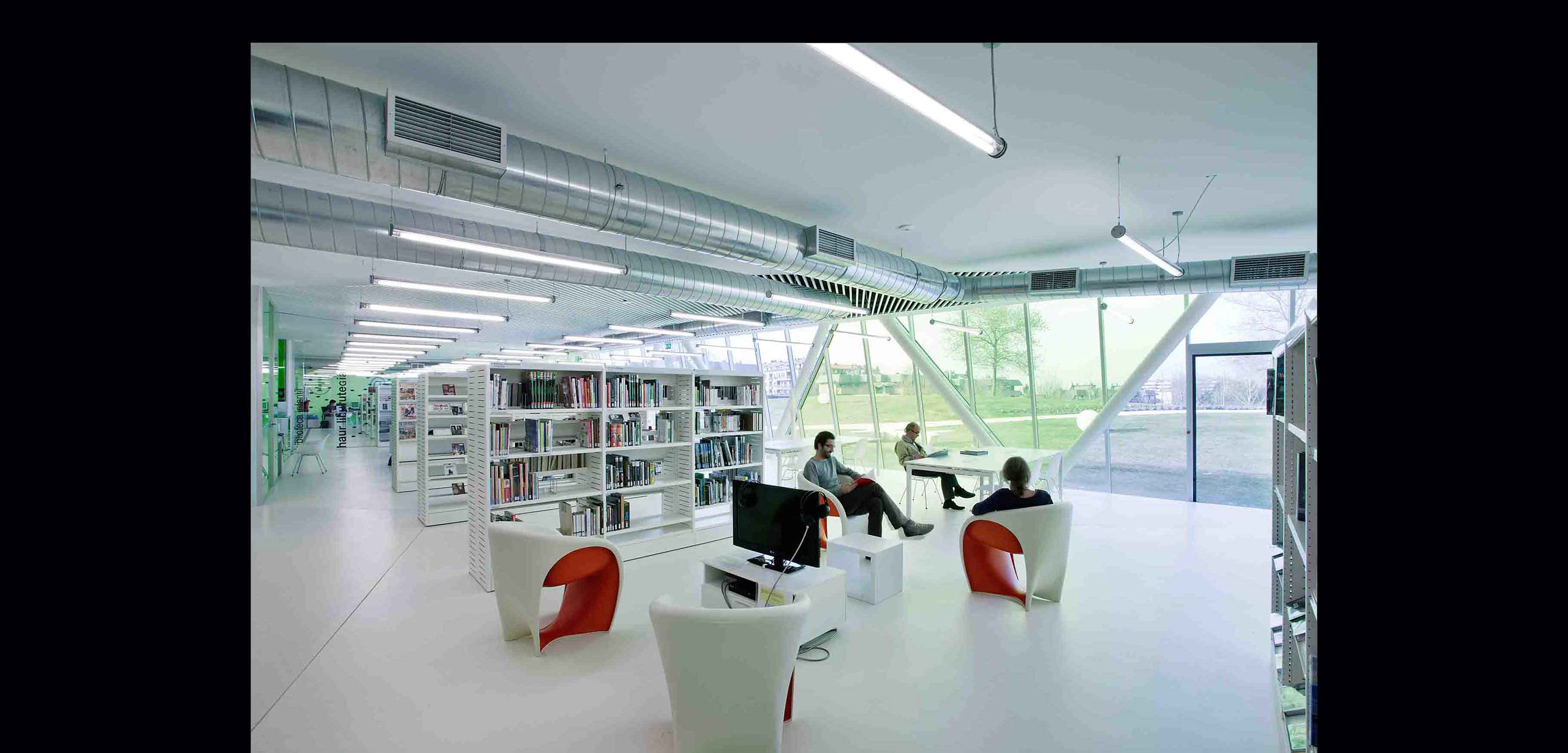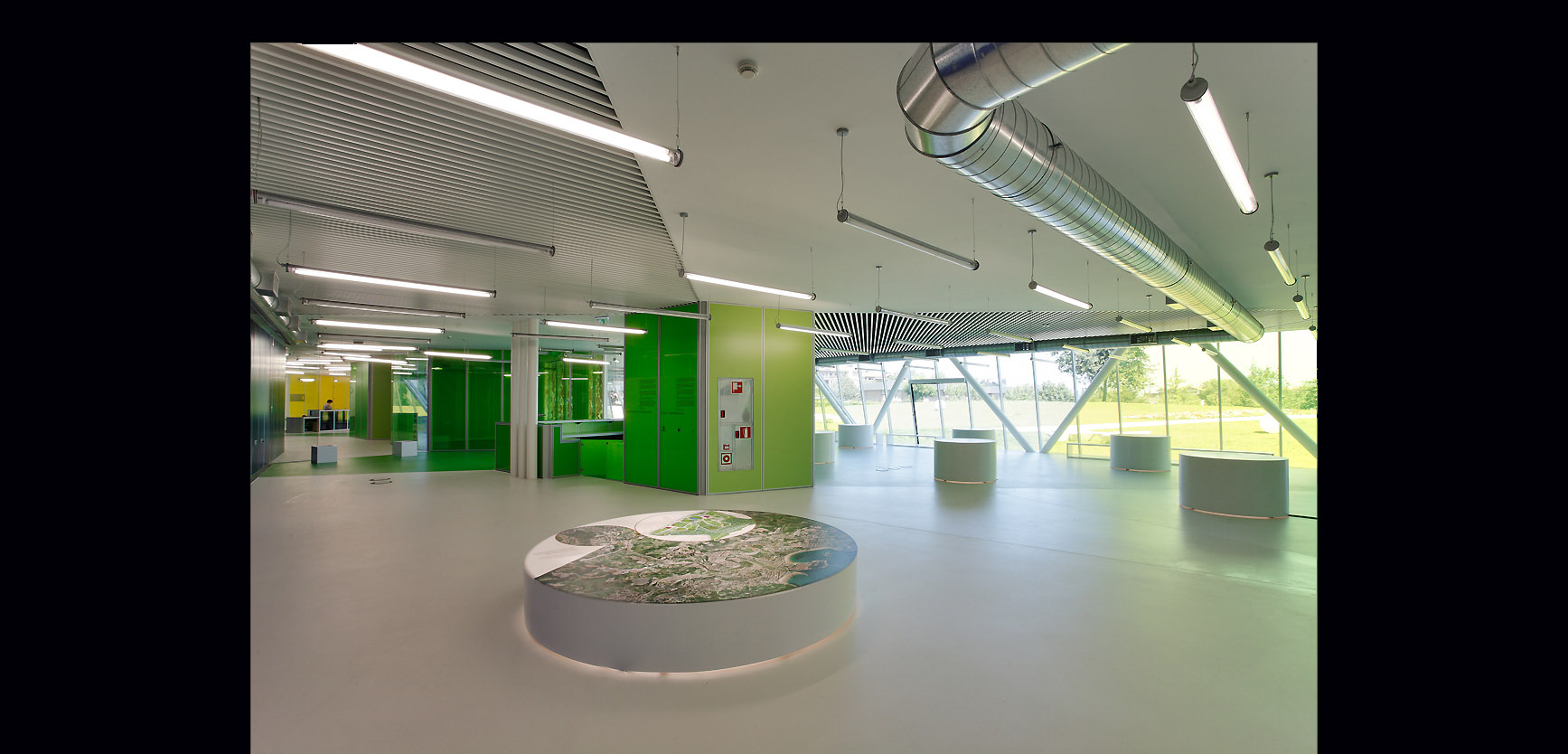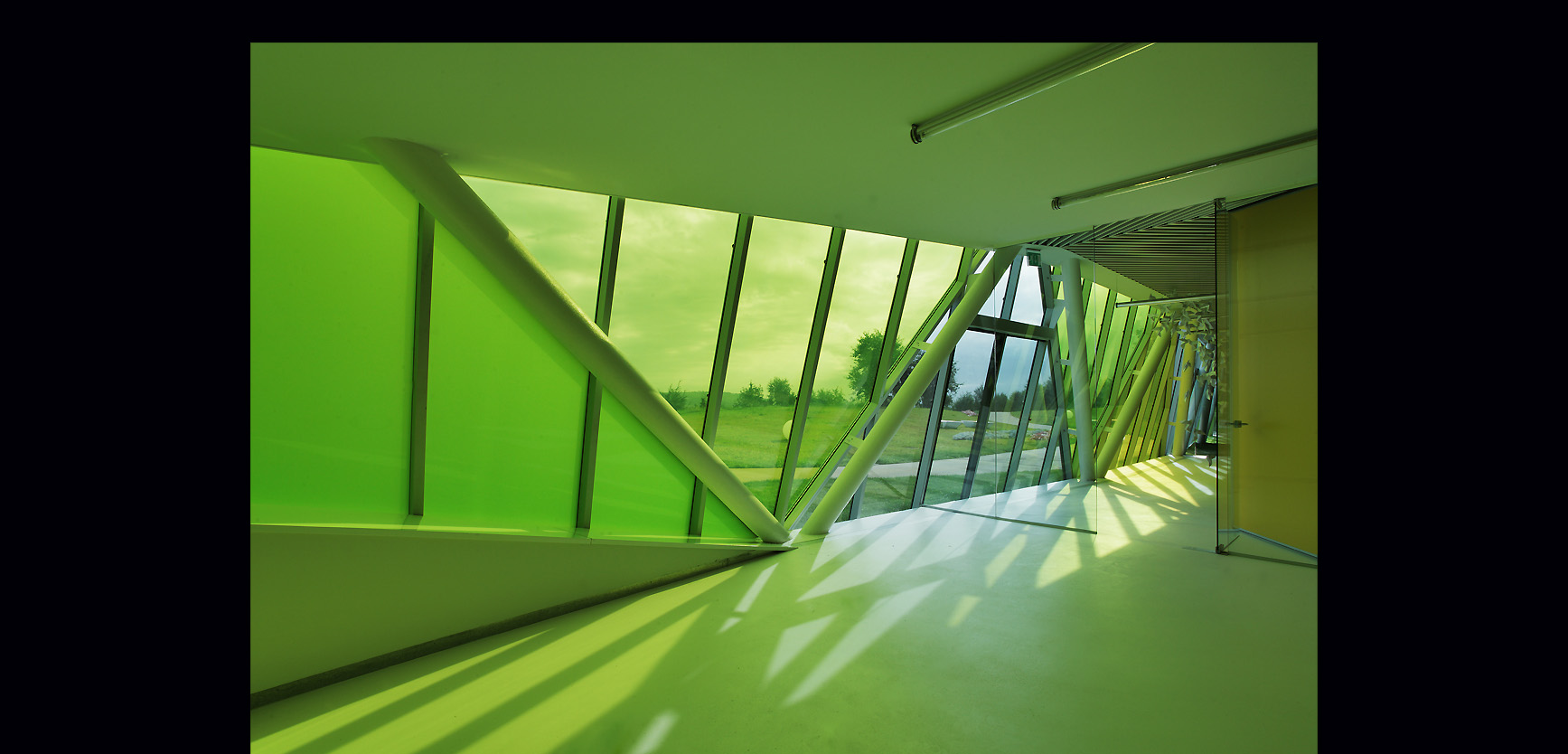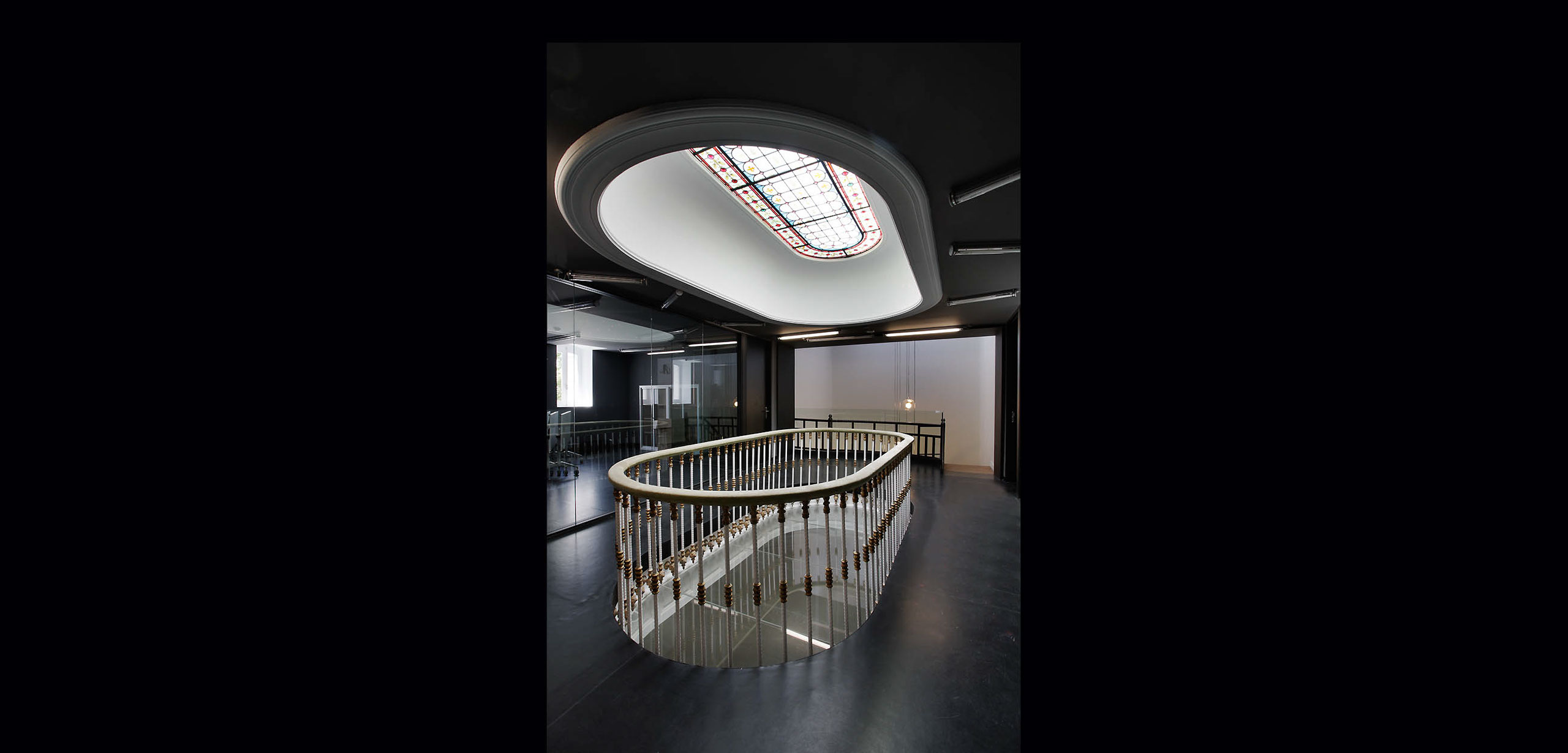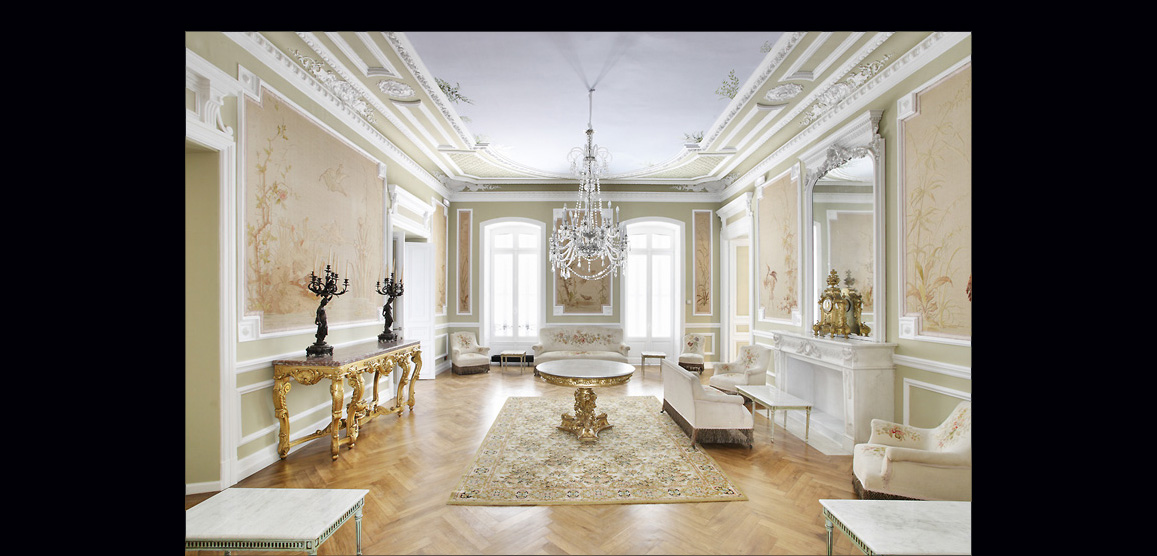+ INFO
Location: Aiete, San Sebastián.
Status: Competition 2005, 1st prize. Finalized 2010.
Program: Cultural Center and Institute of human rights - House of Peace. 3600m2
Team: Carlos Abadías Banzo, Aitzpea Lazkano Orbegozo. Colaborators; Antonio Abellán Alarcón, Cristina de la Calva Villoria, María Silva Pérez.
Client: Ayuntamiento de San Sebastián.
Budget: 5.980.413€
MEMORIA DESCRIPTIVA
Palacio de Aiete
Leonardo Benévolo confiaba en la capacidad de la arquitectura para albergar otras funciones diferentes a la originaria y de contener un margen más o menos amplio para otras utilizaciones; ello implica la posibilidad de transformar su orden formal y su carácter sin que pierda su individualidad: “conservar un edificio significa contener las transformaciones -potencialmente ilimitadas- en los límites a partir de los cuales perdería su naturaleza esencial”. (1957)
El proyecto debía encontrar el equilibrio entre el programa de necesidades y las posibilidades del Palacio. Equilibrio que permitiese mantener la "Naturaleza esencial" de la construcción: la estructura espacial. El Palacio, diferenciaba entre plantas nobles y zonas de servicio y el proyecto debía adecuarse a esta estructura.
Con este objetivo, se ubica la Casa de la Paz en las plantas nobles del edificio (baja y primera), poniendo en valor las decoraciones y el carácter representativo de estas estancias, mientras que en la planta bajocubierta, destinada al servicio en su anterior vida de Palacio, se sitúan los talleres y zonas administrativas del centro cultural.
La forma de usar el edificio potencia también la estructura espacial: la Casa de la Paz (plantas nobles) funciona de forma independiente al Centro Cultural, utilizando la escalera principal del Palacio y manteniendo la entrada Sur como acceso representativo. Las antiguas zonas de servicio, ahora dedicadas a talleres y zonas administrativas del Centro Cultural, utilizan la escalera de servicio para comunicarse con el resto de los usos del Centro situados en el nuevo edificio semienterrado.
La intervención trata de ser clara, didáctica: en las plantas nobles se rehabilitan las salas, suelos, paredes y techos, manteniendo las distribuciones, materiales y las decoraciones originales e introduciendo nuevas instalaciones. En las antiguas zonas de servicio, se realiza una intervención "en negro", como si se hubiese evitado plantear una propuesta formal, como si estos espacios hubiesen sido "restados" al edificio.
Centro Cultural
La finca de AIETE, es un jardín de diseño romántico, pintoresco, de trazado irregular, con senderos en curva, estanques de formas sinuosas... similar a otras creaciones del paisajista Pierre Ducasse. Sin embargo, la zona situada al norte del Palacio tiene un diseño diferente al resto del parque, más relacionado con un estilo de jardín clásico de trazado geométrico, con parterres recortados, y líneas rectas.
El nuevo Centro Cultural se plantea como una intervención en el paisaje que extiende el trazado romántico del parque hacia la ladera situada al Norte del Palacio. Se han estudiado las vistas, la vegetación, los recorridos... integrando la fachada acristalada como un talud más dentro del parque, mediante un lenguaje abstracto que trata de no competir con el lenguaje figurativo del Palacio. La fachada, es a su vez un elemento estructural, conformado por pilares metálicos inclinados que sujetan la losa de cubierta.
Desde el interior, el edificio se comprende como un vacío excavado y abierto hacia el Norte, en el que se han dispuesto unos elementos "burbuja" que organizan las distribuciones. Estos elementos se construyen en mampara de vidrio-melamina, y buscan una continuidad material con la fachada, formando parte, al igual que esta, de la estructura portante del edificio.
Estos subespacios burbuja albergan usos que necesitan de un lugar más reducido y controlado para su funcionamiento: espacios de control, despachos, aseos, almacenes, etc.
El programa se distribuye en "racimo", desde el vestíbulo principal se accede a la biblioteca, el salón de actos, sala de exposiciones, ludoteca, etc. El sistema constructivo permite que haya mamparas en vidrio y en melamina y distintos grados de relación entre los usos. Las instalaciones vistas, la estructura y el sistema constructivo construyen la imagen interior del edificio.
El Centro Cultural se comunica mediante un túnel con el sótano del Palacio, posibilitando el acceso a los talleres y zonas administrativas situadas en la planta bajocubierta.
AZALPEN MEMORIA
Aiete Jauregia
Leonardo Benévolok, hasierako erabilpen jakin bat zuen arkitektura batek, erabilpen berri bat jasateko gaitasunean sinesten zuen ; horrek, bere orden formala eraldatzearren, bere izaera mantentzea baientzen du : « eraikin bat mantentzea, izan dezakeen aldaketak bere funtsezko natura –potentzialki mugagabeak direnak– mugetan mantentzea datza ».
Proiektuak, programaren eta jauregiak emandako aukeren arteko oreka bilatu beharra zuen. Eraikinaren funtsezko natura mantentzeko aukera ematen zuen oreka : egitura espaziala. Jauregiak, solairu noble eta zerbitzu guneak bereizten zituen eta proiektua egitura honetara moldatu beharra zegoen.
Helburu honekin, Bakearen Etxea, eraikinaren solairu nobletan antolatzen da (behe solairua eta lehen solairua), gune hauen izaera erakusgarriak eta dekoraziak baliostatuz. Estalkipeko oineko guneetan, zeinetan zerbitzuzko guneak kokatzen baitziren, Zentro Kulturaleko tailerrak eta administrazio guneak kokatzen dira.
Eraikina erabiltzeko moduak egitura espaziala indartzen du: Bakearen Etxeak (solairu nobleak), zentro kulturaletikiko modu independientean funtziona dezake eskailera nagusia erabiliz eta Hegoaldeko fatxada sarbide nagusi moduan mantenduz. Lehengo zerbitzu guneak, egun zentro kulturaleko tailerrak eta administrazio guneak direnak, zerbitzuko eskailera erabiltzen dute erdilurperatura dagoen eraikineko gainontzeko guneekin erlazionatzeko.
Esku hartzea argia eta didaktikoa izaten sahiatzen da : solairu nobleetako gelak birgaitzen dira, zoruak, sabaiak, hormak, dekorazioak, banaketak eta materialak mantenduz eta instalazio berriak jarriz. Antzineko zerbitzu guneak, « beltzean » lantzen dira, erantzun formal bat ekiditu balitz bezala, espazio hauek jatorrizko eraikinari kendu nahi izan balitzaizkio bezala.
Zentro Kulturala:
Zentro kultural berria paisai-lan bat da, gainontzeko parkearen ezaugarri erromantikoak Jauregiaren iparraldera eramaten dituena. Bistak, ibilbideak, begetazioa… aztertu egin dira, beirazko fatxada parkeko beste ezponda bat bilakatuz, Jauregiko fatxadarekin lehiatzen ez duen diseinu abstraktuarekin. Era berean fatxada egituraren zati da, teilatua heltzen duten metalezko zutabe makurtuz osatutakoa.
Barnetik, eraikina, Iparraldera zabaltzen den hustutako bolumen bat bezala ulertzen da, non espazioa antolatzen duten “burbuia” element batzuk jarri baitira. Elementu hauek beirazko-melaminazko manpara batzuekin garatzen dira fatxadaren materialtasunari jarrapena emanez, hura bezala, eraikinaren egitura izanik.
Programa, mahats-mordo bat bezala antolatzen da: Atari nagusitik, liburutegira, ospakizun aretora, ludotekara… sarbidea emanez. Beirazko eta melaminazko manparak, espazioen arteko erlazio maila ezberdinak eskaintzen ditu, eta aldi berean, begi bistan utzi diren istalakuntza, egitura eta eraikuntza sistemek, eraikinaren barneko itxura eraikitzen dute.
Zentro kulturala eta Jauregia sotoan dagoen tunel baten bidez lotzen dira, estalkipeko oinean kokatuta dauden tailerrei eta gune administratiboei sarbidea eskainiz.
MÉMOIRE DESCRIPTIVE
Palais d´Aiete:
Leonardo Benévolo croyait à la capacité de l'architecture pour accueillir des diverses fonctions autres que l'originale et pour contenir une marge plus ou moins large servant à d'autres usages, ce qui implique la possibilité de transformer son ordre formel et son caractère sans perdre pourtant son l'individualité: "Préserver un bâtiment c’est adapter ce bâtiment à des nouveaux usages, avec des transformations, sans dépasser les limites qui lui feraient perdre sa nature essentielle" (1957).
Le projet devait trouver l'équilibre entre les besoins des programmes et des possibilités du Palais. Un équilibre qui lui permettrait de maintenir le «caractère essentiel» de la construction: la structure spatiale. Le Palais devait différencier entre les étages principaux et les zones de service, et le projet devait être conforme à cette structure.
À ce but, la "Maison de la Paix" a été placée aux étages principaux de l'immeuble (rez-de-chaussée et premier étage), en mettant en valeur les décors et le caractère représentatif de ces chambres, tandis que les ateliers et les zones administratives du centre culturel ont été placés à l´étage sous le toit qui était destiné pour le service pendant la vie antérieure du Palais.
La Maison de la Paix (étages principaux) fonctionne indépendamment du Centre culturel, à l'aide de l'escalier principal du Palais et en maintenant l'entrée sud en raison de son caractère d’accès représentatif. Les anciennes zones de service, actuellement consacrées aux ateliers et aux zones administratives du Centre culturel utilisent les escaliers de service pour se communiquer avec le reste des usages du Centre situés dans le nouveau bâtiment partiellement enterré.
L’intervention se propose d’être claire et didactique: aux étages principaux on a rénové les planchers, murs et plafonds, en conservant les distributions, les matériaux et les décorations originales et en introduisant des nouvelles installations. Dans les anciennes zones de service, nous avons effectué une intervention "en noir" comme si on avait évité de faire une proposition formelle, comme si ces zones avaient été "soustraites" du bâtiment.
Centre Culturel Aiete:
La propriété d’Aiete a été conçue comme un jardin romantique, pittoresque, de forme irrégulière, avec des chemins courbes, des étangs sinueux... ressemblant à d'autres créations du paysagiste Pierre Ducasse. Cependant, la zone située au nord du Palais a une conception différente du reste du parc, et elle s’approche davantage à un style de jardin géométrique classique, avec des parterres à fleurs, et des lignes droites.
Le nouveau Centre Culturel est proposé comme une intervention dans le paysage qui étend le chemin romantique du parc vers le coteau situé au nord du Palais. Nous avons étudié les vues, la végétation, les chemins ... et nous avons intégré la façade en verre comme si elle était un autre talus dans le parc, au moyen d’un langage abstrait qui essaie de ne pas rivaliser avec le langage figuré du Palais. La façade est à son tour un élément structurel, constitué de piliers métalliques inclinés qui supportent la dalle du toit. La structure devient l'élément principal du résultat formel.
De l'intérieur, on comprend le bâtiment comme une grotte creusée et ouverte vers le nord, dans laquelle on a disposé quelques éléments «bulle» qui organisent les distributions. Ces éléments sont construits en verre et mélamine et ils cherchent une continuité de matière avec la façade tout en faisant partie, comme la façade, de la structure portante du bâtiment.
Ces petits espaces "bulle" contiennent les usages qui ont besoin d'un endroit plus réduit et contrôlé pour leur fonctionnement: les salles de contrôle, les bureaux, les toilettes, etc.
Le programme est distribué en forme de «grappe». Depuis le hall principal on accède à la bibliothèque, l’auditorium, la salle des expositions, la salle de jeux, etc. Le système de construction permet qu’il y ait des écrans en verre et en mélamine et des degrés différents de relation entre les utilisations. Les installations en plein air, la structure et le système de construction forment l'image à l'intérieur du bâtiment.
Le Centre culturel est relié par un tunnel au sous-sol du Palais, ce qui permet l'accès aux ateliers et aux zones administratives situées à l’étage sous le toit.
DESCRIPTIVE MEMORY
Aiete Palace
Leonardo Benévolo trusted in the capacity for the architecture to hold different functions than the original one, and to have a certain margin for other uses; that involves the possibility of tranforming its order, without losing its individuality: “to preserve a building means to contain the transformations –potentially unlimited– within the limits from where it would lose its key nature” (1957).
The project had to accommodate the new program needs with the possibilities of the preexisting Palace’s structure, and focused on providing a balance that would keep the “essential nature” of the pre-existing construction underlying it’s most important value: the clarity of its spatial structure. The original Palace made a distinction between the main floors and the service areas, and the project had to adapt to that structure.
The two different parts of the program gave us the key solution to the project: the House of Peace and Human rights would be on the main floors of the Palace (ground and first floor) just to emphasize its spatial structure, the ornaments, the carpets on the walls, the wooden carpentries, etc., and the Culture Center’s workshop would be located on the second floor, used for services in its previous life.
The project proposes a way to use the building that enhances its original spatial structure: the House of Peace can be seen like a building inside another building, it can work independently from the rest of the Cultural Center by using the main staircase of the Palace, keeping the main door located in the south, as its main entrance. The old service areas, now occupied with parts of the Cultural Center, connect the new building by the stairwell of service.
The intervention tries to be clear and educational: in the rooms of the main floors, floors, walls and ceilings are refurbished, maintaining distributions, materials and original ornaments while introducing new systems. The intervention in the old service areas are kept “in black”, as if we had avoided proposing a formal intervention or as if these areas had been “subtracted” from the building.
Cultural Center
The new building is conceived as an intervention in the landscape that extends the park’s romantic plot to the north side of the Palace. We have studied the views, vegetation, routes… integrating the glass façade as another slope in the park. The glass facade has been designed following an abstract form in order to differentiate from the figurative language of the architecture of the existing Palace.
From the inside, the building is understood as an excavated void, opened to the north where some “bubble” elements organize the distribution. These elements are built with glass-melamine partitions, achieving continuity with the material of the facade, and playing a role in the sustaining structure of the building.
The program is distributed in a "cluster" surrounding the main lobby. The access to each main use always happens through two “bubbles,” where double doors endow privacy and necessary acoustic control and security.
These bubbles contain applications that need a smaller place and controlled for operation: control spaces, offices, toilets, stores, etc.
The Cultural Center is connected by a tunnel with the basement of the Palace, allowing access to the workshops and administrative areas of the second floor.
